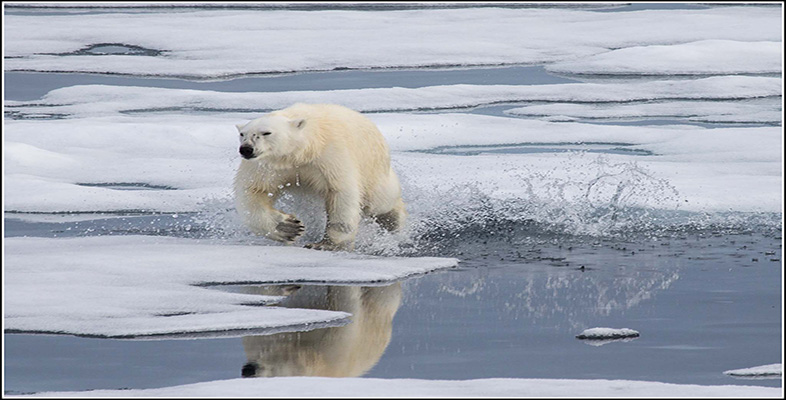1 Views of the frozen planet
The Ancient Greeks were aware of and had perhaps even visited the Arctic, which they called Arktos. They imagined there must be a similar but opposite cold southern landmass to balance the world so they coined the name ‘Ant Arktos’, which has developed into the Antarctic. Superficially the two polar regions are very different but they also have many similarities (Figure 1).

In this course you will investigate and discover the processes that have shaped the polar world. The first activity investigates your current knowledge of the polar regions.
Activity 1 Your personal view of the frozen planet
The aim of this activity is for you to write down your initial thoughts about the polar regions without doing any research. So please jot down your responses to the following questions, answering first for the Arctic, and then the Antarctic.
- a.What three images or impressions come to mind?
- b.What three words, phrases or names do you first think of?
- c.What is the last news story you remember about each region?
- d.Who owns it?
Answer
The set of answers shown below is from one of the team who asked a family member with no experience of the frozen planet. Here are her answers:
- a.Images for the Arctic: cold; polar bear; igloo. For the Antarctic: penguin; whale; ice.
- b.Words for the Arctic: polar bear; the Titanic; Eskimo. For the Antarctic: the windiest and coldest place on earth; heroic exploration; remote.
- c.For the Arctic: a news story about the continued shrinking of the sea ice. For the Antarctic: a news story about a giant iceberg the size of Wales breaking away and drifting northwards.
- d.For the Arctic: it is owned by Russia, Canada, Norway and America. For the Antarctic: the United Kingdom, Argentina and perhaps the United States or Russia?
You should keep in mind that these answers are most likely not definitive.
It would be surprising if in your answers to Activity 1 there was not at least some mention of ice and the cold. Personally, I was surprised to see no mention of the dark and the incredible beauty, but that is just my view. What is clear is that the cold and climate of both regions are highlighted along with the wildlife. There were media stories about how the regions are changing and finally there appear to be some interesting questions around the subject of ownership. Ownership relates to the management of, and ultimately who could live in the polar regions.
The defining feature of the polar environment is the cold so it would not be surprising if in your answers to Activity 1 you had mentioned it. Then there is the wildlife, the history of exploration, the isolation, the beauty and so on. Fundamentally the polar regions are most likely all of the things you mentioned in your answer to Activity 1 but they are not geographically isolated. In this course you will discover why the poles are cold, and investigate key features of the frozen planet. You will discover that processes operating at the poles affect all of us and consequently their future is our future.
